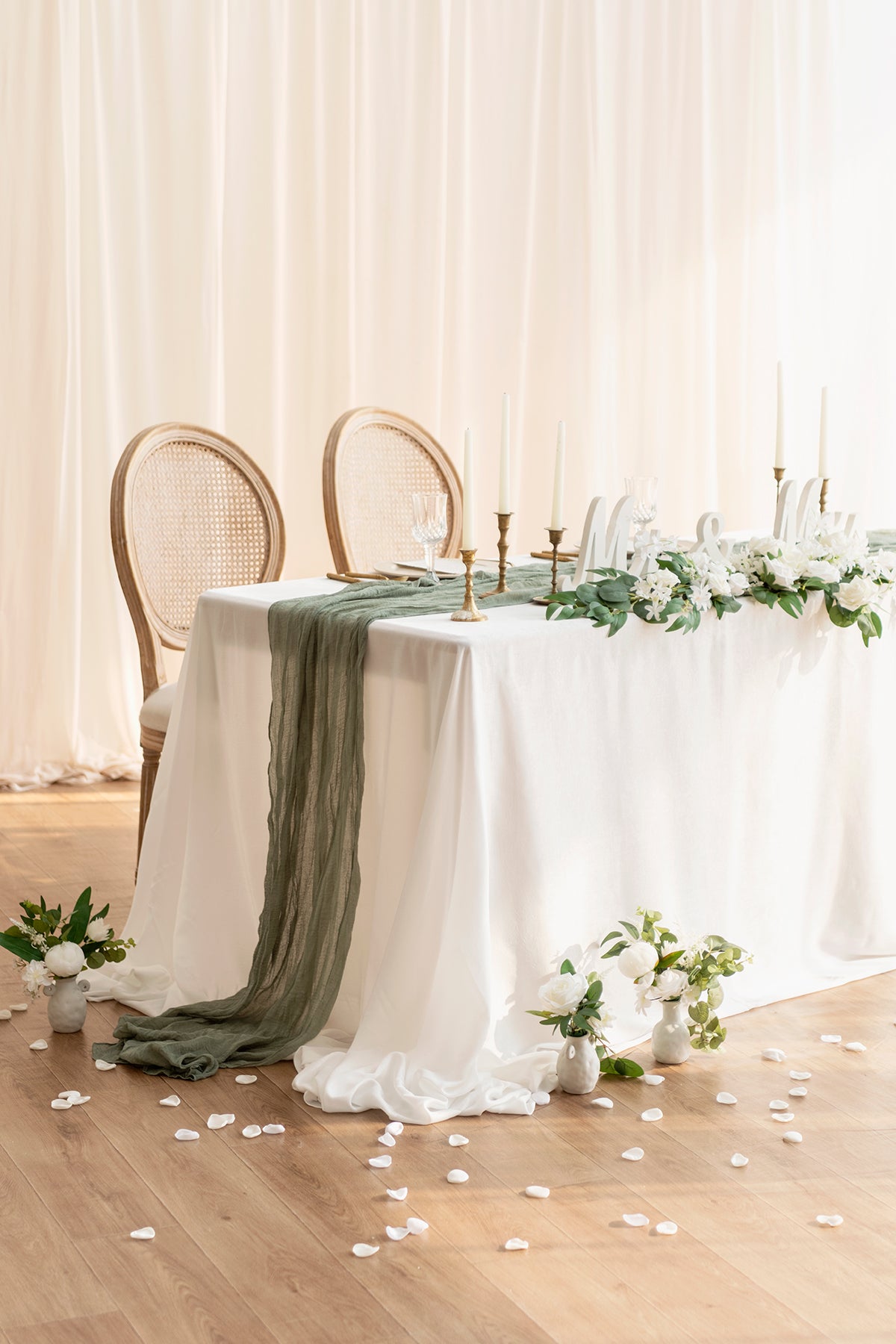Innovative Table Runner Uses: Beyond the Table
Wiki Article
Linen Material Developments: Checking Out Modern Trends and Creative Applications in Layout and Textile Sector
From sustainable production methods to cutting-edge weaving modern technologies, the advancement of bed linen is improving the landscape of the textile market. As we dive right into the worlds of imaginative style applications and the introduction of linen blends and hybrid fabrics, a new phase unfolds in which linen's role in future textile advancements takes center stage.Sustainable Practices in Linen Manufacturing
Lasting practices in bed linen production have ended up being significantly crucial in the fabric market's efforts to decrease ecological impact and advertise moral sourcing approaches. Bed linen, a natural fiber originated from the flax plant, uses a series of benefits such as breathability, biodegradability, and sturdiness. However, standard methods of linen production can involve significant water intake, pesticide usage, and energy-intensive processes.To attend to these difficulties, lots of fabric makers are embracing sustainable methods throughout the bed linen production procedure. This includes sourcing flax from natural farms that prevent unsafe pesticides and chemicals, implementing water-efficient retting methods to remove fibers from the flax stalks, and making use of environment-friendly dyes and surfaces. Additionally, some business are purchasing sustainable power resources to power their production facilities and lowering waste via recycling and upcycling efforts.
Technological Advancements in Linen Weaving
With the growing focus on lasting practices in linen production, the fabric sector is now observing a rise in technological advancements particularly aimed at reinventing the art of bed linen weaving. These technologies are improving the way bed linen materials are generated, providing raised efficiency, top quality, and imagination in weaving strategies.Among the vital technical innovations in bed linen weaving is the combination of electronic looms. These innovative looms are geared up with software program that allows for intricate and intricate layouts to be woven with precision. By digitizing the weaving process, makers can attain higher uniformity and precision in their linen fabrics.
Additionally, improvements in yarn spinning innovation have enabled the production of finer and even more sturdy bed linen threads - table cloths. This results in softer and smoother bed linen materials that keep their quality also after several usages and cleans
In addition, the advancement of environmentally friendly dyeing processes and surfaces for linen fabrics is gaining grip. These lasting practices not just reduce the ecological impact yet likewise satisfy the raising consumer need for fairly produced fabrics.
Creative Design Applications for Bed Linen
Cutting-edge imaginative methods are progressively forming the creative style applications for bed linen in the textile market. Bed linen's natural aesthetic charm and capacity to mix with various other fabrics make it a preferred option for creating distinct garments and devices that cater to the ecologically mindful customer.Moreover, designers are try out linen in home decoration, using its long lasting and breathable nature to craft stylish furnishings such as drapes, bed linens, and furniture. The appearance and drape of bed linen bring a feeling of sophistication and comfort to interior areas, including a touch of style to modern homes.

Linen Blends and Hybrid Fabrics

Crossbreed materials, on the other hand, take the principle of blending an action even more by incorporating extra elements such as metal threads, recycled products, or conductive fibers. These cutting-edge fabrics not just expand the layout possibilities yet also present functional facets like conductivity, antimicrobial residential properties, or enhanced toughness. Hybrid textiles are increasingly being made use of in various markets, consisting of fashion, interior decoration, and technological fabrics, where the demand for multifunctional products gets on the rise.
Bed linen's Duty in Future Textile Innovations

In the realm of future textile advancements, bed linen is anticipated to be a key player in the advancement of sophisticated useful textiles. Researchers and designers are checking out methods to improve bed linen's integral top qualities via technical advancements, such as incorporating smart textiles, nanotechnology, and performance finishes. These advancements intend to elevate bed linen's performance features, making it appropriate for a broader variety of applications, from activewear to protective clothes.
Furthermore, the combination of linen with other all-natural or artificial fibers opens limitless possibilities for producing novel textiles with one-of-a-kind properties and capabilities. By leveraging bed linen's qualities and discovering ingenious blends, the fabric industry is poised to introduce exciting growths that deal with developing consumer demands and sustainability demands.
Final Thought
In final thought, the exploration of lasting methods, technological advancements, imaginative style applications, linen blends, and its role in future fabric advancements highlight the constant evolution of bed linen material in the modern style and textile sector. With a concentrate on innovation and creative thinking, the adaptability and environmentally friendly nature of bed linen make it a useful material for developers and producers alike, paving the means for additional growths and improvements in the area of textiles.As we dive into the worlds of innovative layout applications and the development of bed linen blends and hybrid materials, a brand-new chapter unravels in which linen's function in future fabric developments takes facility stage.
Checking out the blend of linen with various other textiles has led to the introduction of innovative blends and crossbreed fabrics in the contemporary fabric industry. Bed linen blends provide an unique combination of the characteristics of bed linen with those of various other fibers, resulting in fabrics that have enhanced residential or commercial properties such as increased durability, improved draping, and decreased wrinkling.The advancement of bed linen blends and crossbreed fabrics has set the phase for Bed linen to play a critical role in driving future fabric technologies.In the world of future fabric developments, bed linen is expected to be a vital gamer in the development of sophisticated functional fabrics.
Report this wiki page